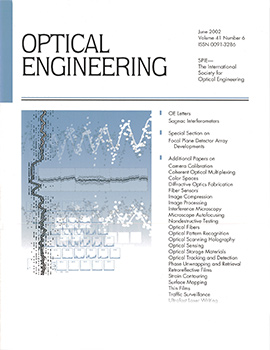J. de Bruijne, A. Reynolds, Michael Perryman, Fabio Favata, Anthony Peacock
Optical Engineering, Vol. 41, Issue 06, (June 2002) https://doi.org/10.1117/1.1475334
TOPICS: Photons, Atmospheric corrections, Sensors, Astronomy, Telescopes, Space telescopes, Calibration, Atmospheric optics, Point spread functions, Refraction
Currently operating optical superconducting tunnel junction (STJ) detectors, developed at the European Space Agency (ESA), can simultaneously measure the wavelength (?? = 50 nm at 500 nm) and arrival time (to within ~5?s) of individual photons in the range 310 to 720 nm with an efficiency of ~70%, and with count rates of the order of 5000 photons s~1 per junction. A number of STJs placed in an array format generates 4-D data: photon arrival time, energy, and array element (X,Y). Such STJ cameras are ideally suited for, e.g., high-time- resolution spectrally resolved monitoring of variable sources or low- resolution spectroscopy of faint extragalactic objects. The reduction of STJ data involves detector efficiency correction, atmospheric extinction correction, sky background subtraction, and, unlike that of data from CCD-based systems, a more complex energy calibration, barycentric arrival time correction, energy range selection, and time binning; these steps are, in many respects, analogous to procedures followed in high- energy astrophysics. We discuss these calibration steps in detail using a representative observation of the cataclysmic variable UZ Fornacis; these data were obtained with ESA's S-Cam2 6x6-pixel device. We furthermore discuss issues related to telescope pointing and guiding, differential atmospheric refraction, and atmosphere-induced image motion and image smearing ("seeing") in the focal plane. We also present a simple and effective recipe for extracting the evolution of atmospheric seeing with time from any science exposure and discuss a number of caveats in the interpretation of STJ-based time-binned data, such as light curves and hardness ratio plots.


 Receive Email Alerts
Receive Email Alerts